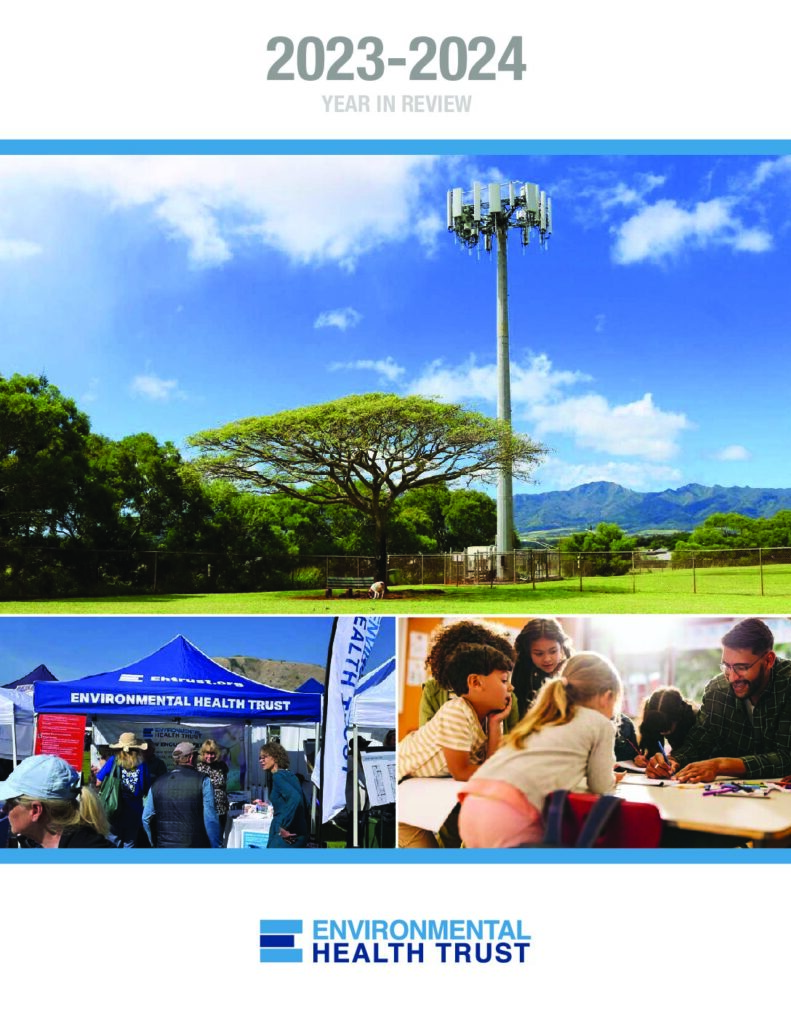Radiation Analysis in a Gradual 5G Network Deployment Strategy
by Electrical & Computer Eng. Department of Beirut Arab University
A 2020 paper analyzed the radio frequency radiation environment that would result if a mmWave-based 5G network was fully deployed in Austin Texas. The researcher first mapped the pre-existing LTE nodes and then laid out the real world design for the densification of cell towers and signal repeaters which would be needed in the City in order to fully build out a mmWave-based 5G network. The engineers then simulated the RF power densities that would be experienced in the outdoor environments should the 5G mmWave antennas be installed and they compared these RF levels to power levels of the currently installed LTE network.
The researchers created 2 heat-maps showing the simulated power densities before and after potential 5G deployment in Austin Texas.

The researchers conclude that, “The presented results clearly show that the potential radiation levels that will be reached upon the roll out of 5G networks do not comply with all of the aforementioned exposure limits. This suggests that 5G mobile networks can not yet be classified as safe for the public, and demands serious considerations before using mmWave communications for 5G networks, given the potential harms it could afflict on the public.”
On a governmental level, the exposure limits for the power density need to be revised using today’s data and approaches to bridge the gap between the thresholds specified by the different institutes and commissions. On a technological and scientific level, the radiation exposure constraint can open the door for innovative 5G solutions targeted to limit the health risks and economic barriers associated with this problem.”
A. M. El-Hajj and T. Naous, “Radiation Analysis in a Gradual 5G Network Deployment Strategy,” 2020 IEEE 3rd 5G World Forum (5GWF), Bangalore, India, 2020, pp. 448-453, doi: 10.1109/5GWF49715.2020.9221314.
Research Shows Small Cell Antenna Densification Will Increase Exposures in Communities
A 2018 study published in Annals of Telecommunications found increased RF-EMF exposure from small cell LTE networks in two urban cities in France and the Netherlands. Researchers measured the RF-EMF from LTE (Long-Term Evolution) MC (macro cells meaning large cell towers) and SC networks (low-powered small cell base stations) and found that the small cell networks increased the radio emissions from base stations (called downlink) by a factor of 7–46 while decreasing the radio emissions from user equipment exposure (called ) by a factor of 5–17. So while the devices themselves could emit less radiation, the cell antennas will increase the levels from cell antennas (Mazloum et al., 2019). This study shows the increased exposures would be involuntary. We can turn our phones off, but we cannot turn off the antennas in the neighborhood.
An Australian study published in the Journal of Exposure Science & Environmental Epidemiology also found that children in kindergartens with nearby antenna installations had nearly three-and-a-half times higher RF exposures than children with installations further away by more than 300 meters (Bhatt et al., 2016).
A 2018 multi-country study published in Environment International measured RF in several countries. It found that cell phone tower radiation is the dominant contributor to RF exposure in most outdoor areas; exposure in urban areas was higher and that exposure has drastically increased. As an example, the measurements the researchers took in Los Angeles, USA were 70 times higher than the US EPA estimate 40 years ago (Sagar et al., 2018).







